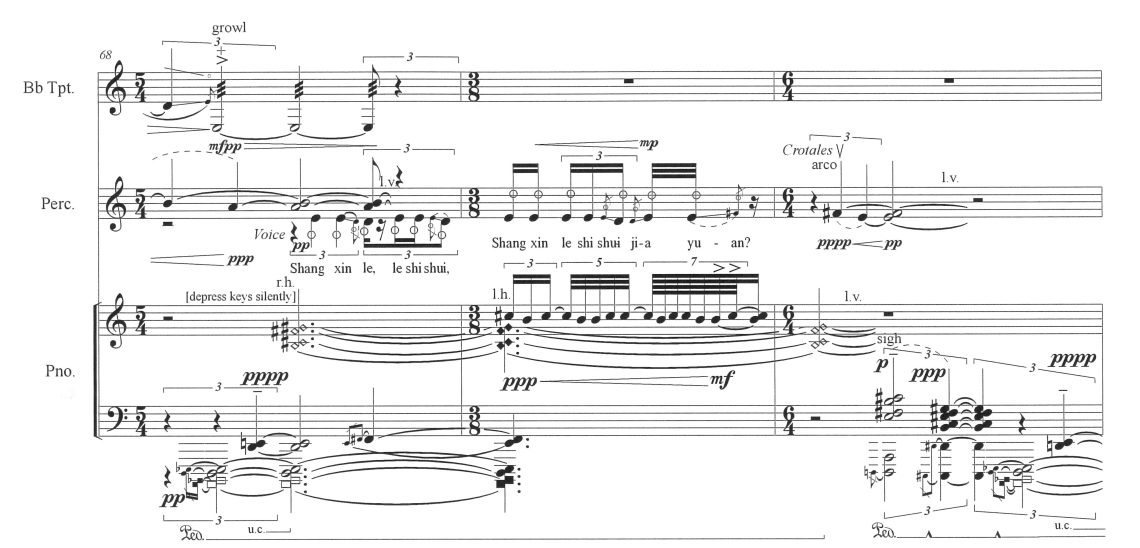Garden of Breath for the Renewal of Love—Gallipoli Response
Contemporary Chinese scholar Edward Ho speaks of the ancient Chinese scholarship of the literati and their attitudes to creativity and the life force flowing through it as qiyun principles of breath and vibrating Chinese zither sounds of the qin tones, as forms of energy. From my artistic perspective, the strong and robust qi coexists in a tangled and complimentary way with the understated subtly resonant yun breath of life vibrations; swirling energy is identifiable in its different forms yet forever integrated in its complex entanglement of life.

These entanglements of energy as creative expression found form in my music’s sensual sonorous moments and erupting cacophony caught up in the flow of colouristic changes in Where are the Sounds of Joy? The energy—born of pianistic improvisation and Judeo-Christian meditation—becomes a flow through the landscapes of sound, such as Chinese opera accelerating Peking opera cymbal patterns used in military scenes, Chinese Kunqu lyricism’s interval sonorities, Filipino kulintang percussion patterns, Chinese Confucian multi-timbre changes of tones, and American influenced free bluesy-based improvisation drawn from Medeski, Martin and Wood. I later worked with my friend, the painter Luping Zeng, to create this sense through visual juxtapositions of painterly energy to accompany the music via film. Entangled melodic lines and rich chords with chromatic juxtapositions in my music found equivalents in Zeng’s naked female dancer body movement images isolated with glowing reds, yellows and the symbolic love greens. What holds the diversity together is the prism of Chinese literati influenced gestural energy—gentleness-suddenness moments of forcefulness amongst resonance in Ho’s sense, that give the creative voice its identity and clarity as living colours.


In the approaching autumn of April each year, Australians pause to reflect on the nature of war. My music too in Where Are the Sounds of Joy? is a reflection on conflict. It use qiyun energy to reimagine the Gallipoli war from the Chinese perspective with the underlying poetic metaphor from Kunqu in the Peony Pavilion, of a broken down garden as the site for dreaming of the ideal lover, used as a parallel of Gallipoli as broken down walls from which one dreams of escape. I thought that faced with the horrors of war, that one way a soldier (and also a reflective nation) could come to terms with it, could be to dream of love as a way to transcend it all.